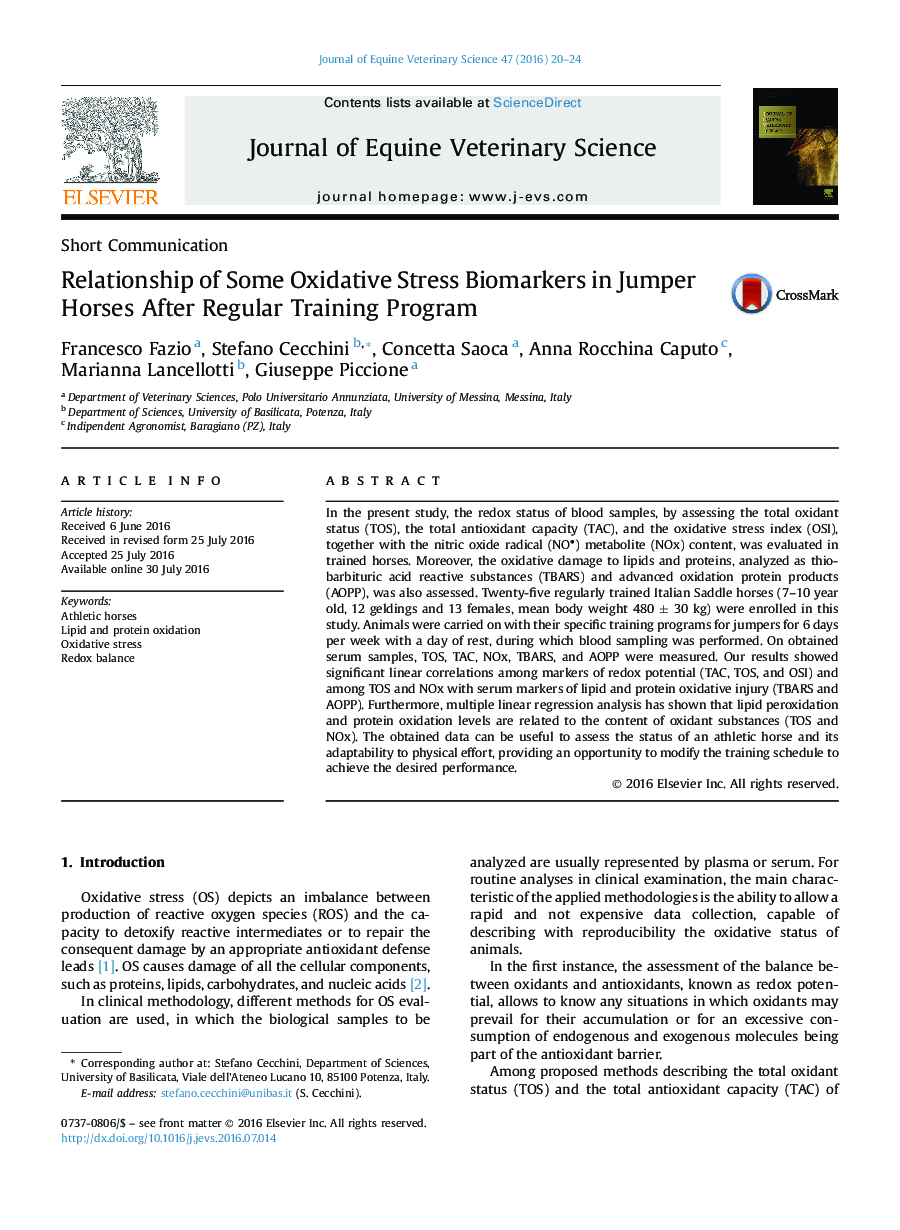| Article ID | Journal | Published Year | Pages | File Type |
|---|---|---|---|---|
| 2394323 | Journal of Equine Veterinary Science | 2016 | 5 Pages |
•The redox status of blood samples and the oxidative damage to lipids and proteins was evaluated in trained horses.•Lipid peroxidation and protein oxidation are related to the oxidant substances in trained jumper horses.•The present data can be useful to assess the status of an athletic horse and its adaptability to physical effort.
In the present study, the redox status of blood samples, by assessing the total oxidant status (TOS), the total antioxidant capacity (TAC), and the oxidative stress index (OSI), together with the nitric oxide radical (NO•) metabolite (NOx) content, was evaluated in trained horses. Moreover, the oxidative damage to lipids and proteins, analyzed as thiobarbituric acid reactive substances (TBARS) and advanced oxidation protein products (AOPP), was also assessed. Twenty-five regularly trained Italian Saddle horses (7–10 year old, 12 geldings and 13 females, mean body weight 480 ± 30 kg) were enrolled in this study. Animals were carried on with their specific training programs for jumpers for 6 days per week with a day of rest, during which blood sampling was performed. On obtained serum samples, TOS, TAC, NOx, TBARS, and AOPP were measured. Our results showed significant linear correlations among markers of redox potential (TAC, TOS, and OSI) and among TOS and NOx with serum markers of lipid and protein oxidative injury (TBARS and AOPP). Furthermore, multiple linear regression analysis has shown that lipid peroxidation and protein oxidation levels are related to the content of oxidant substances (TOS and NOx). The obtained data can be useful to assess the status of an athletic horse and its adaptability to physical effort, providing an opportunity to modify the training schedule to achieve the desired performance.
